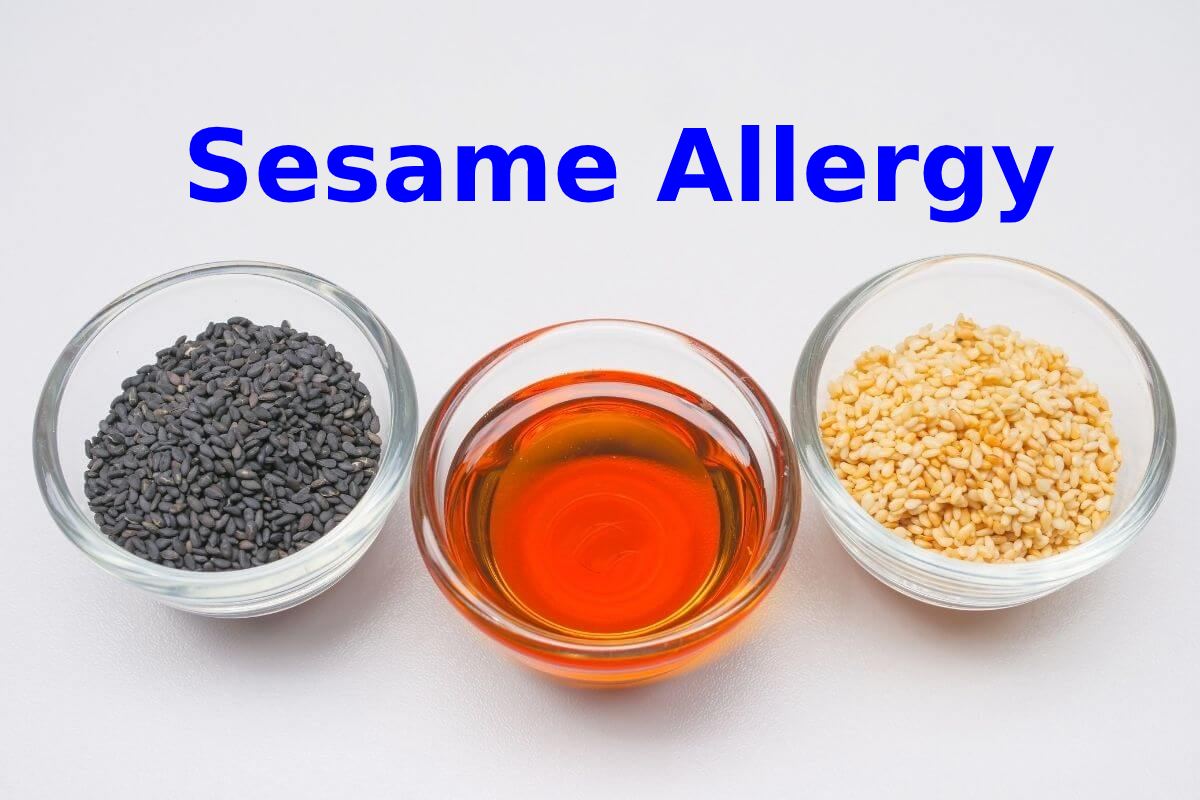Sesame Allergy – Did you know that Sesame is one of the common record allergens in Canada? Therefore, allergy sufferers need to avoid consuming Sesame and foods while making healthy food choices. Read on to learn all about sesame allergy.
Table of Contents
What is a Sesame Allergy?
A sesame allergy occurs when the immune system mistakes Sesame (such as sesame seeds or sesame oil) for something harmful. For some people, Sesame can cause reactions that can be life-threatening.
What stand the symptoms of a Sesame Allergy?
Like added food allergies, a sesame allergy can include any of the following symptoms:
- Difficulty breathing
- Speaking or swallowing
- Anxiety
- Distress
- Fainting
- Paleness
- Weakness
- Cramps
- Diarrhoea
- Vomiting
The severity of these symptoms can contrast from one allergic reaction to another. Even a trivial amount of Sesame can cause an allergic reaction. It is vital to avoid entirely foods that contain Sesame and sesame-based ingredients if you are allergic.
When is a Sesame Allergy usually diagnosed?
In general, children are more likely to develop an allergy than near adults. Consult your doctor or allergist if you dubious a sesame allergy.
What foods contain Sesame?
Did you know that sesame seeds can be smooth white or charcoal black?
Here are some foods that may contain Sesame:
- Loaves of bread, cereals and crackers
- Dips and spreads, such as hummus
- Sesame oil
- tahini
- Tempeh
- Certain baked goods
- Dressings, sauces, marinades and soups
- Seasonings, flavourings and spices
- Vegetal oils
Canadian guidelines require that the presence of Sesame in products remain indicated on the label. Always read the ingredient list carefully. This will say “contains sesame” if the product contains it. If a product does not contain Sesame but nearby is a risk that the food has come into contact with Sesame (through cross-contamination), you will see the statement “may contain sesame” at the end of the list of ingredients. You should also avoid these foods.
If you’re on a sesame-free diet, remember these helpful tips:
- Look for the disputes “contains sesame” on the ingredient list. The presence of Sesame in food is now clearly indicated on the labels.
- Avoid food products whose label indicates that they “may contain sesame or traces of sesame”.
- Contact the manufacturer if you are unsure if a product does not contain Sesame. Flat if you have used the product before, it can have changed. The manufacturer’s contact details are indicated on the packaging of many products.
- Do not take any risk. For example, avoid foods that don’t have a clear ingredient list or foods that contain ingredients you don’t recognize. Also, avoid imported products, as their label does not always give accurate information.
- Find out. Sign up for the Canadian Food Scrutiny Agency’s (CFIA) free e-mail notification service ” Food Recall Warning “.
- When eating out, ask if foods containing Sesame are used. If you can, call forward to see if sesame-free options are available.
Know About Food Allergies
The risk of developing an allergy is partly hereditary. The chances are more significant for children whose family members suffer from this allergy. Cow’s milk allergy is most common in babies. It usually passes on its own, but 25 to 58% develop other food allergies afterwards. These are characterized by various symptoms, which makes diagnosis difficult.
How to prevent the development of allergies?

There’s not much you tin do to cut your child’s risk of developing food allergies. However, the following tips may help. If your child is at risk of actuality allergic to a specific type of fruit or vegetable, offer them only cooked. If there is no allergic answer, you can start adding them raw to his meals.
Introduce new ingredients every 3-5 days to see how your baby reacts. There is no reason to exclude potentially allergenic foods. On the contrary: it seems that introducing them at the right time (from 4 to 6 months) protects against the development of food allergies.

